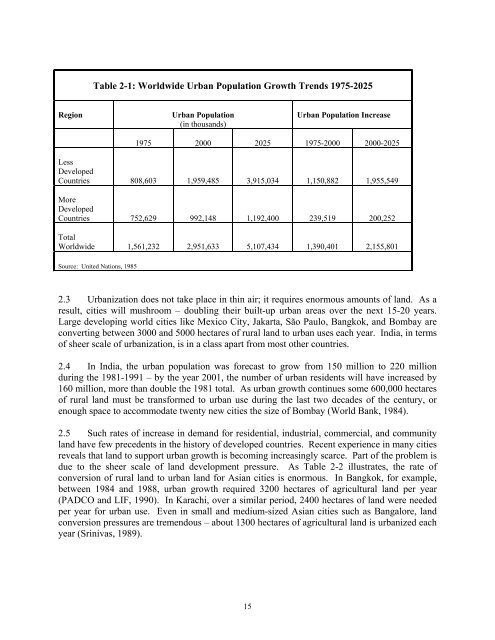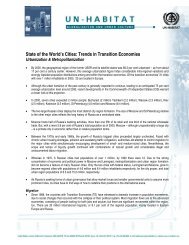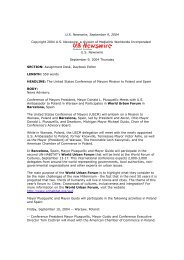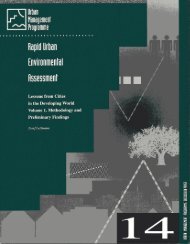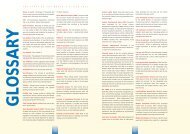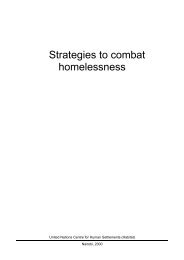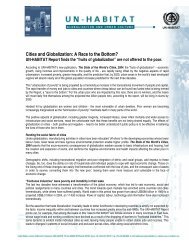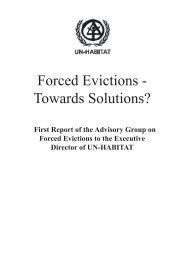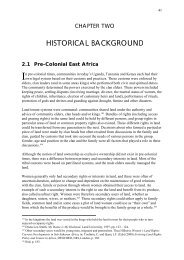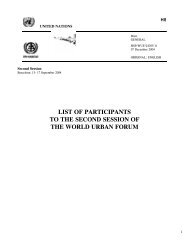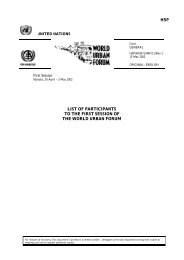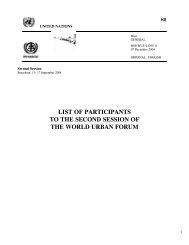a framework for reforming urban land policies in ... - UN-HABITAT
a framework for reforming urban land policies in ... - UN-HABITAT
a framework for reforming urban land policies in ... - UN-HABITAT
Create successful ePaper yourself
Turn your PDF publications into a flip-book with our unique Google optimized e-Paper software.
Table 2-1: Worldwide Urban Population Growth Trends 1975-2025<br />
Region Urban Population<br />
(<strong>in</strong> thousands)<br />
15<br />
Urban Population Increase<br />
1975 2000 2025 1975-2000 2000-2025<br />
Less<br />
Developed<br />
Countries 808,603 1,959,485 3,915,034 1,150,882 1,955,549<br />
More<br />
Developed<br />
Countries 752,629 992,148 1,192,400 239,519 200,252<br />
Total<br />
Worldwide 1,561,232 2,951,633 5,107,434 1,390,401 2,155,801<br />
Source: United Nations, 1985<br />
2.3 Urbanization does not take place <strong>in</strong> th<strong>in</strong> air; it requires enormous amounts of <strong>land</strong>. As a<br />
result, cities will mushroom – doubl<strong>in</strong>g their built-up <strong>urban</strong> areas over the next 15-20 years.<br />
Large develop<strong>in</strong>g world cities like Mexico City, Jakarta, São Paulo, Bangkok, and Bombay are<br />
convert<strong>in</strong>g between 3000 and 5000 hectares of rural <strong>land</strong> to <strong>urban</strong> uses each year. India, <strong>in</strong> terms<br />
of sheer scale of <strong>urban</strong>ization, is <strong>in</strong> a class apart from most other countries.<br />
2.4 In India, the <strong>urban</strong> population was <strong>for</strong>ecast to grow from 150 million to 220 million<br />
dur<strong>in</strong>g the 1981-1991 – by the year 2001, the number of <strong>urban</strong> residents will have <strong>in</strong>creased by<br />
160 million, more than double the 1981 total. As <strong>urban</strong> growth cont<strong>in</strong>ues some 600,000 hectares<br />
of rural <strong>land</strong> must be trans<strong>for</strong>med to <strong>urban</strong> use dur<strong>in</strong>g the last two decades of the century, or<br />
enough space to accommodate twenty new cities the size of Bombay (World Bank, 1984).<br />
2.5 Such rates of <strong>in</strong>crease <strong>in</strong> demand <strong>for</strong> residential, <strong>in</strong>dustrial, commercial, and community<br />
<strong>land</strong> have few precedents <strong>in</strong> the history of developed countries. Recent experience <strong>in</strong> many cities<br />
reveals that <strong>land</strong> to support <strong>urban</strong> growth is becom<strong>in</strong>g <strong>in</strong>creas<strong>in</strong>gly scarce. Part of the problem is<br />
due to the sheer scale of <strong>land</strong> development pressure. As Table 2-2 illustrates, the rate of<br />
conversion of rural <strong>land</strong> to <strong>urban</strong> <strong>land</strong> <strong>for</strong> Asian cities is enormous. In Bangkok, <strong>for</strong> example,<br />
between 1984 and 1988, <strong>urban</strong> growth required 3200 hectares of agricultural <strong>land</strong> per year<br />
(PADCO and LIF, 1990). In Karachi, over a similar period, 2400 hectares of <strong>land</strong> were needed<br />
per year <strong>for</strong> <strong>urban</strong> use. Even <strong>in</strong> small and medium-sized Asian cities such as Bangalore, <strong>land</strong><br />
conversion pressures are tremendous – about 1300 hectares of agricultural <strong>land</strong> is <strong>urban</strong>ized each<br />
year (Sr<strong>in</strong>ivas, 1989).


